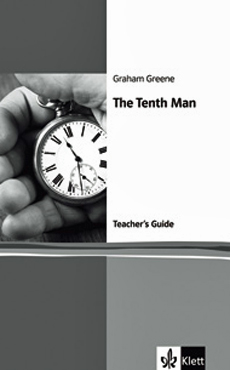Teacher's Guide
1.
Didactic and Methodical Considerations
The following criteria have been decisive for the choice of Graham Greeneīs
"The Tenth Man":
- The novel introduces students to one of the most popular English authors of the 20th century.
- With about 3o,ooo words the novel is an ideal length for reading in class.
- It contains the typical elements of Greeneīs works in miniature as well as being a masterpiece of psychological narrative writing.
- The novel is divided into four parts and eighteen chapters which aids interpretation in class. Moreover, Greene uses a lucid, straightforward style of writing and limits the number of characters.
- The Tenth Man is a contemporary historical novel from the period of World-War-II and directly afterwards.
The following thematic aspects characterize the novel:
- Crime fiction
-
War and peace
- The consequences
of war for the individual
- The impact of war
and power on the individual.
- The problem of interpersonal
relations
Greene has several messages to deliver. Thus we learn that:.. (see Teacherīs Guide)
The Teacherīs Guide offers a variety of different teaching and learning methods which encourage students to get as much as possible out of the novel while extending both their proficiency in English and their ability to interpret a literary text.

Graham Greene, The Tenth Man, Teacher's Guide
ITEMS
1. Didactic
and Methodical Considerations
2.
Sample
In addition to guided interpretations in the form of "chalk and talk" instruction, the Guide suggests:
- possibilities for pair/group work and individual assignments
- stimuli which encourage students to contribute their opinions
- home assignments involving certain thematic aspects e.g. how to summarize events or plot outlines either orally or in a written form and to summarize blocks of information on the blackboard.
Contact: info@new-english-readers.de
